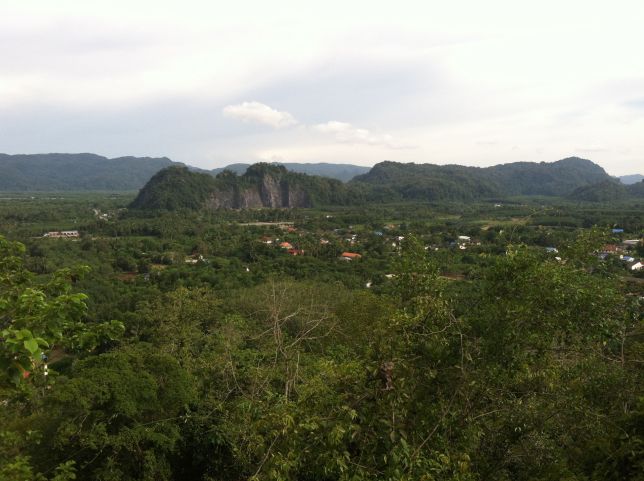Where Chacos Take Me: Part 2

Dirty, stench ridden and falling apart. These things are the status of my 6th pair of Chacos. Sure, they might look pristine, they might exude love and good vibes, they may even create rainbows and sunshine on a cloudy day. But stick your nose a little closer and you’ll experience the rancor of miles. The last week has added a significant amount of wear and tear on my beloved Jesus sandals. Ironically enough, it happened to be on holy ground that I tread this time as well.
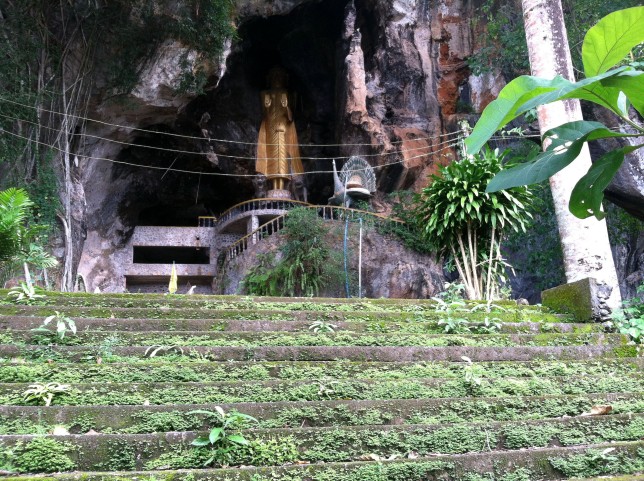 Behold. Wat Tham Khao Chin. In English that means Temple Cave of Khao Chin. Many Buddhist monks find caves to meditate at and to seek enlightenment. This temple was once heavily used. However, over time, parts of it have fallen into disuse and become neglected. It’s proximity to a monastery where monks train and learn the inner workings of Buddhism have allowed it to still be in use, but once you’ve left these areas, it is beautifully sad.
Behold. Wat Tham Khao Chin. In English that means Temple Cave of Khao Chin. Many Buddhist monks find caves to meditate at and to seek enlightenment. This temple was once heavily used. However, over time, parts of it have fallen into disuse and become neglected. It’s proximity to a monastery where monks train and learn the inner workings of Buddhism have allowed it to still be in use, but once you’ve left these areas, it is beautifully sad.
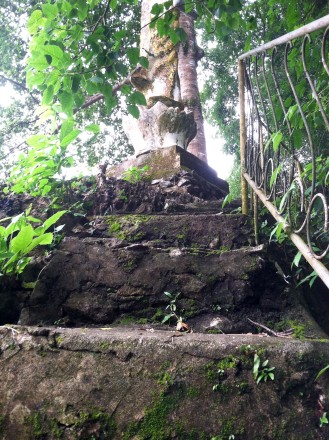 Stone steps leading up to a disregarded statue are overgrown and show little signs of being reclaimed.
Stone steps leading up to a disregarded statue are overgrown and show little signs of being reclaimed.
The temple itself is built into the side of a mountain, thus, the vast majority of it is inside a network of caverns and passageways. The outside facade is fading though. But the evidence remains of what was once a spectacular place of learning and discovery.  The continued use of the temple is obvious. But just image what this place once looked like..
The continued use of the temple is obvious. But just image what this place once looked like..
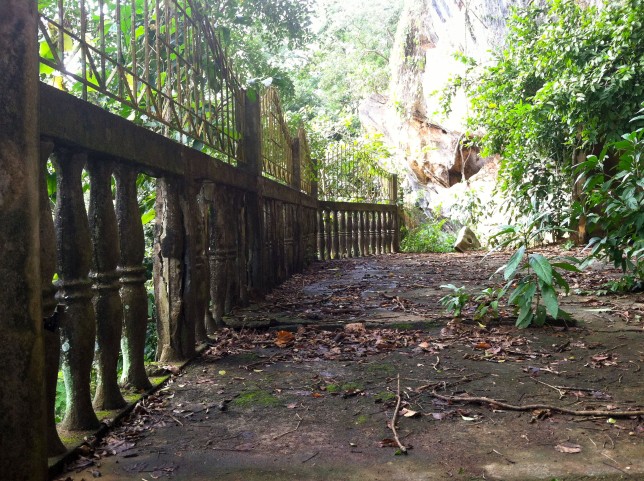
Small homes and figurines that represent spirits, ancestors and beings of nature are littered throughout the grounds. Thai Buddhism features aspects of Animism. Animism encompasses the belief that there is no separation between the spiritual and physical world, and souls or spirits exist, not only in humans, but also in some other animals, plants, rocks, geographic features such as mountains or rivers, or other entities of the natural environment, including thunder, wind, and shadows.
 The figures here easily number close to a hundred or more.
The figures here easily number close to a hundred or more.
There are very few repeated figurines, almost as if each on was carefully chosen and left for a specific type of spirit.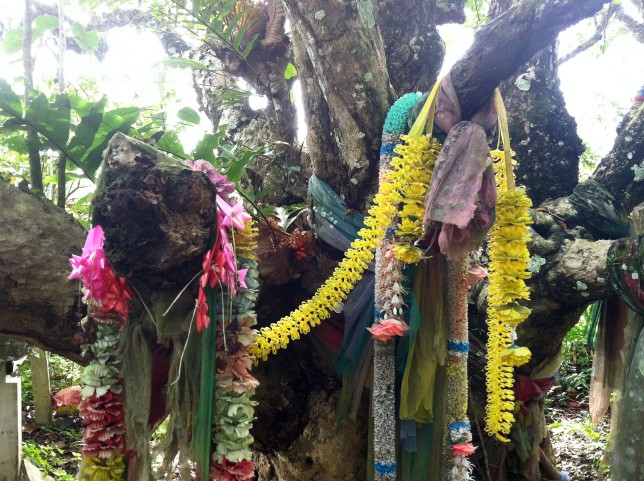
The shrines of once famous monks are also visible, as well as their homes. But ultimately, the most interesting parts of the temple were the areas that are still in use.
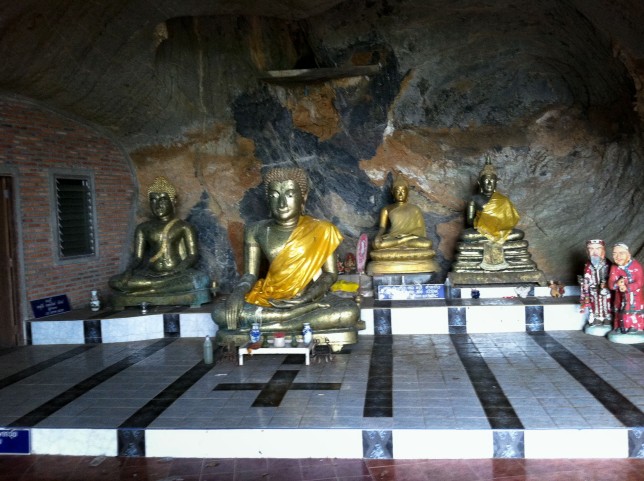 An intrepid adventurer needs to crawl through small cave holes and poke about to stumble upon golden Buddha statues that are lovingly preserved from the ravages of time. The example you see above was at the top of a pair of stone steps that are crumbled and dangerous. But getting to this point was highly worth it.
An intrepid adventurer needs to crawl through small cave holes and poke about to stumble upon golden Buddha statues that are lovingly preserved from the ravages of time. The example you see above was at the top of a pair of stone steps that are crumbled and dangerous. But getting to this point was highly worth it.  To get an appropriate idea of the scale of this Buddha, please look at the buckets at the base of it. This is easily a 20 to 30 foot long reclining Buddha. Beautiful, stunning and highly inspirational. There are other sections of this temple that I’ve documented as well, but I feel like the most interesting part is at the top of the mountain and the way to get there. Steps…hundreds of steps.
To get an appropriate idea of the scale of this Buddha, please look at the buckets at the base of it. This is easily a 20 to 30 foot long reclining Buddha. Beautiful, stunning and highly inspirational. There are other sections of this temple that I’ve documented as well, but I feel like the most interesting part is at the top of the mountain and the way to get there. Steps…hundreds of steps.
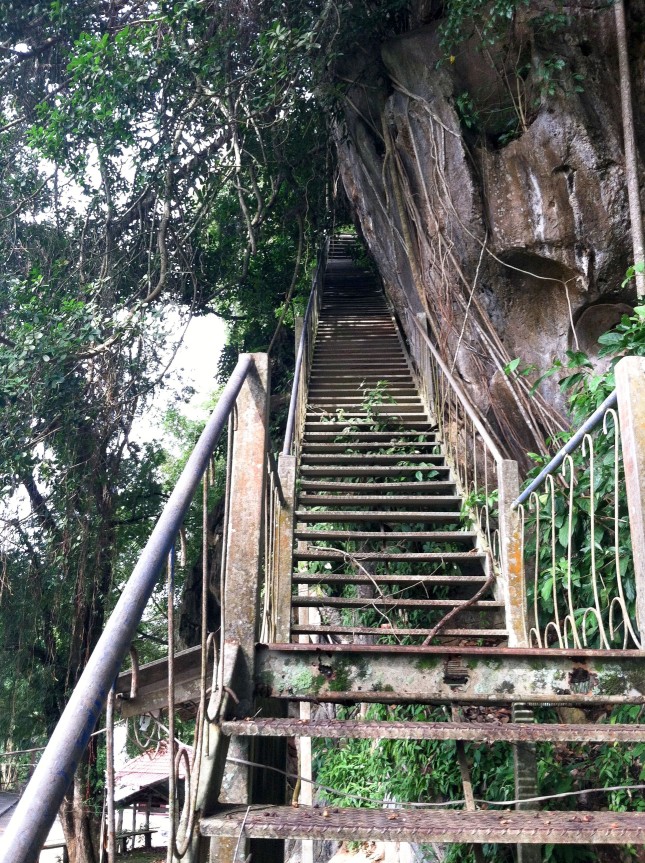 These are not your ordinary run of the mill steps either. There is potential death on these things. Not only are they not anchored into the mountain side, they are also rusted and in some cases warped. As if mountain itself got angry at the neglect of a holy place and tried to shrug off the iron ring surrounding it.
These are not your ordinary run of the mill steps either. There is potential death on these things. Not only are they not anchored into the mountain side, they are also rusted and in some cases warped. As if mountain itself got angry at the neglect of a holy place and tried to shrug off the iron ring surrounding it.
 Once you’ve safely made it past that imploded part, the steps go from being steps to being a ladder disguised as steps.
Once you’ve safely made it past that imploded part, the steps go from being steps to being a ladder disguised as steps.  Those roots of doom and dread are just waiting to upheave the person that doesn’t respect them.
Those roots of doom and dread are just waiting to upheave the person that doesn’t respect them.
Note the broken section…wayyyy down below. These put Stairmaster to shame. Like crawling through spider ridden caves, slipping on bat guano and being attacked by angry wasps has its perks. So too does 600 ft. of vertical stairs. Once we made it to the top, I truly saw where I live now for the first time…it’s a sight worth climbing for that a photo simply cannot do justice.


